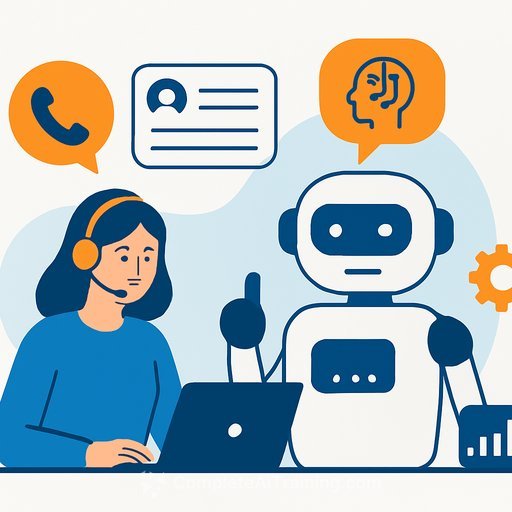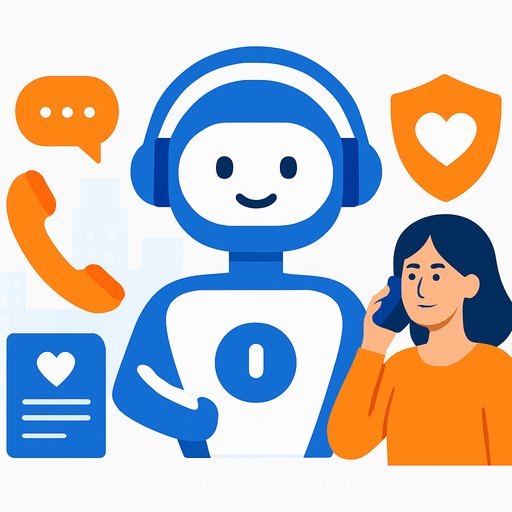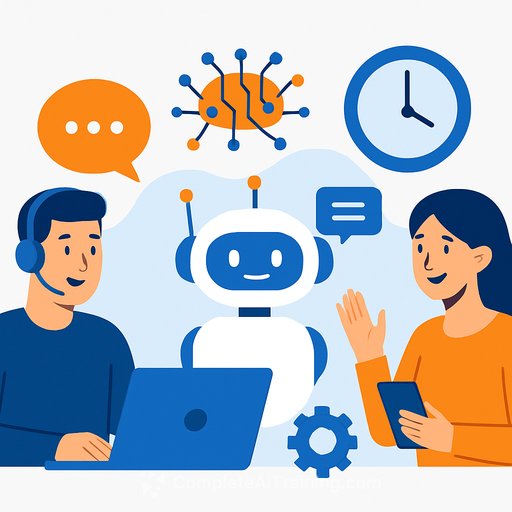AI Is Rewriting Frontline Support: Zendesk Says 80% of Queries Can Be Resolved Without Humans
Zendesk has launched fully autonomous AI agents-built for voice and chat-that it claims can resolve around 80% of customer queries without human backup. These agents are trained to understand natural speech, take action across systems, and close tickets without escalation.
The move follows years of chatbot deployment across five billion issues a year for 20,000+ customers. The message is clear: high-volume, repetitive work is moving to machines, while humans handle exceptions and high-stakes moments.
What's actually new here
- Voice-first agents: Not just text chat. These agents can listen, speak, and complete tasks end-to-end.
- Agentic behavior: The system can decide what to do next, fetch data, trigger workflows, and resolve cases without waiting on a human.
- Resolution over response: As Zendesk's CEO put it, customers don't want fast replies-they want problems solved.
Zendesk also reports higher satisfaction after bot interactions in many scenarios, signaling that accuracy and speed are beating queue times and transfers.
What this means for support teams
First-line support will shrink. Exception handling, edge cases, and relationship-driven interactions become the core of human work. Your value shifts from answering the same questions to managing outcomes, empathy-required moments, and systems quality.
The teams that win will build an operating model around AI: strong intent design, clean knowledge, clear escalation rules, and tight QA loops.
Where humans still matter
- Complex scenarios: Multi-step issues with policy nuance, account risk, or emotional stakes.
- Trust moments: Billing disputes, account recovery, and complaints where reassurance is the outcome.
- Quality control: Reviewing conversations, tuning prompts and flows, and improving knowledge coverage.
- Exception handling: Fraud, legal holds, VIP handling, outages, and broken workflows.
How to adapt your operation now
- Redesign intake: Route by intent, not channel. Let AI handle high-frequency intents; fast-lane sensitive cases to humans.
- Rebuild your knowledge base: Short, atomic answers. Clear step-by-step flows. Consistent naming. Keep one source of truth.
- Define escalation triggers: Policy boundaries, sentiment thresholds, and time-boxed actions that hand off to humans instantly.
- Instrument everything: Tag intents, track containment, measure first contact resolution and time-to-resolution by bot vs human.
- Set voice standards: Script tone, disallowed phrases, and required disclosures (recording, security).
- Create a daily tuning ritual: Review 20-50 bot conversations, fix root causes, update knowledge, and adjust flows.
- Upskill agents: Train them as conversation designers, bot supervisors, and QA analysts.
Metrics that matter with AI in the loop
- Automation rate (containment): % of tickets fully resolved by AI without human touch.
- Resolution accuracy: % of AI-resolved cases that stay closed for 7-14 days (no reopen).
- Time-to-resolution: Compare bot vs human on key intents.
- Escalation rate and reasons: What the bot can't do is your roadmap for improvements.
- CSAT by channel and intent: Don't average; segment to see where bots win or lose.
- Cost per resolved conversation: Track savings without hiding poor outcomes.
Risk controls you'll need
- Guardrails: Hard limits on actions involving refunds, data exposure, policy overrides, and account deletions.
- Human fail-safe: Clear and instant access to a person on request or on sentiment dips.
- Compliance: Recording consent, PII handling, and secure verification flows for voice.
- Source control: Bots must cite approved knowledge; no guessing outside policy.
Team roles to hire or grow
- Conversation designers: Map intents, write flows, and define tone.
- Bot analysts: Own dashboards, diagnose failures, and prioritize fixes.
- Knowledge managers: Keep content fresh, structured, and audited.
- QA specialists: Score interactions, coach agents, and enforce standards across AI and human channels.
How to pilot without breaking your queue
- Start with 3-5 high-volume, low-risk intents. Measure baseline before launch.
- Roll out to 10-20% of traffic. Watch escalation and CSAT closely.
- Iterate weekly until you hit target resolution and accuracy. Then scale coverage.
- Maintain a published policy: what the bot can do, when humans take over, and how to reach them.
Bottom line
AI will handle the bulk of repetitive support. Your job shifts to building the system, coaching it, and stepping in where judgment and empathy create trust. If you build the right guardrails and metrics, you can improve speed, quality, and costs at the same time.
For more on the vendor's approach, see Zendesk AI. If you're upskilling your team for these roles, explore AI courses by job.
Your membership also unlocks:






